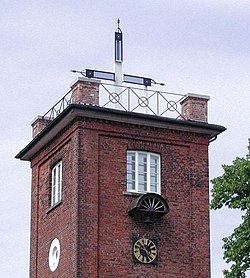Westergate (river)
Germany river stubsLower Saxony river stubsRivers of Bremen (state)Rivers of GermanyRivers of Lower Saxony ... and 1 more
Tributaries of the Weser

Westergate is a short river of Bremen and Lower Saxony, Germany. It is a branch of the Weser. The Westergate branches from the Weser west of Farge. It reunites with the Weser near Elsfleth.
Excerpt from the Wikipedia article Westergate (river) (License: CC BY-SA 3.0, Authors, Images).Westergate (river)
Bahnhofsplatz,
Geographical coordinates (GPS) Address Nearby Places Show on map
Geographical coordinates (GPS)
| Latitude | Longitude |
|---|---|
| N 53.2272 ° | E 8.4661 ° |
Address
Bahnhofsplatz
26931
Lower Saxony, Germany
Open on Google Maps







